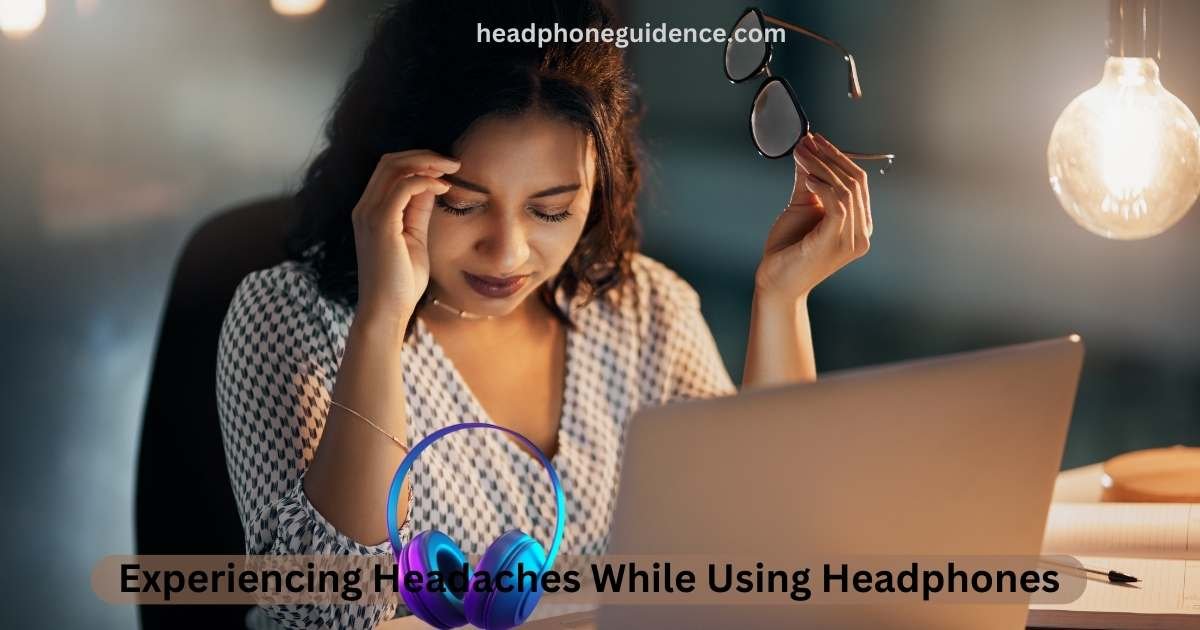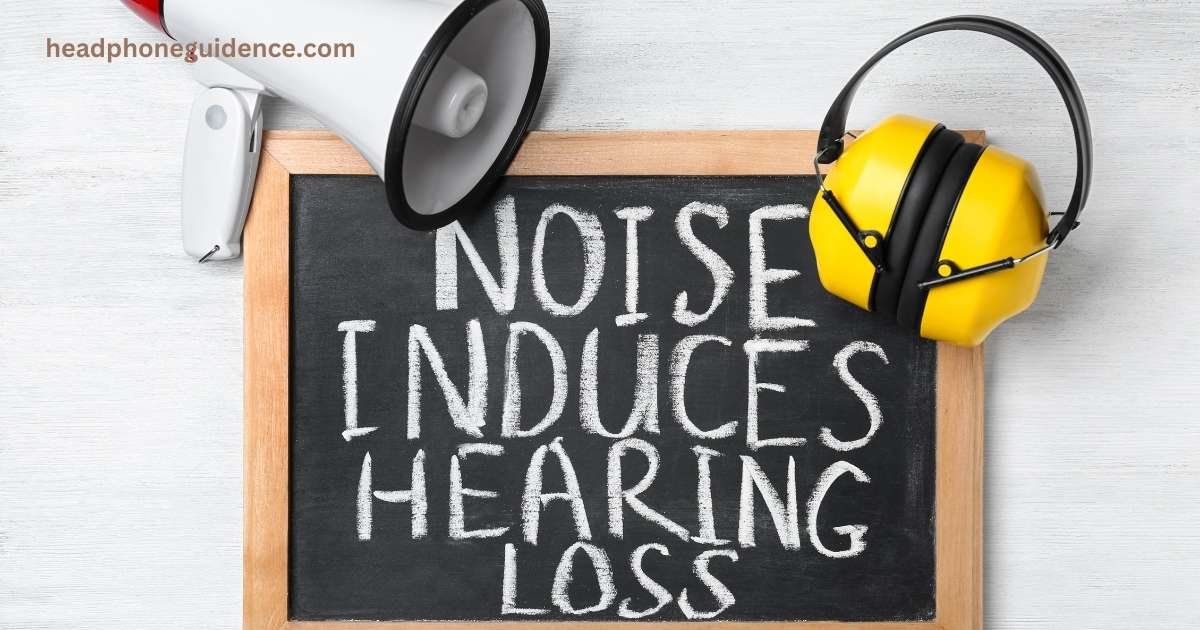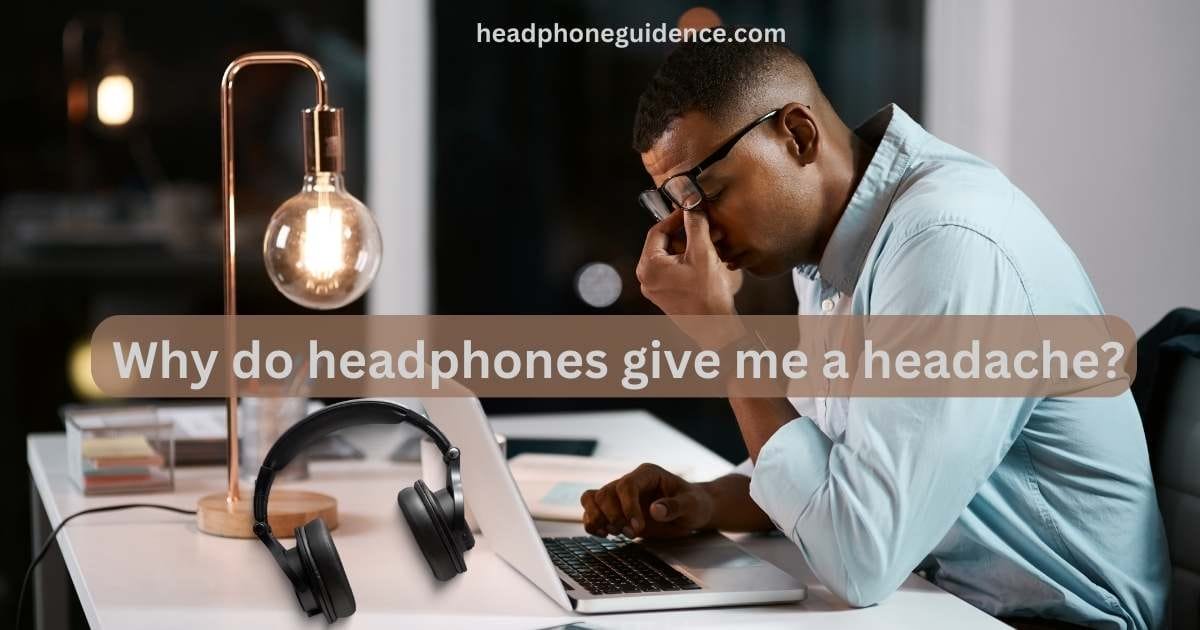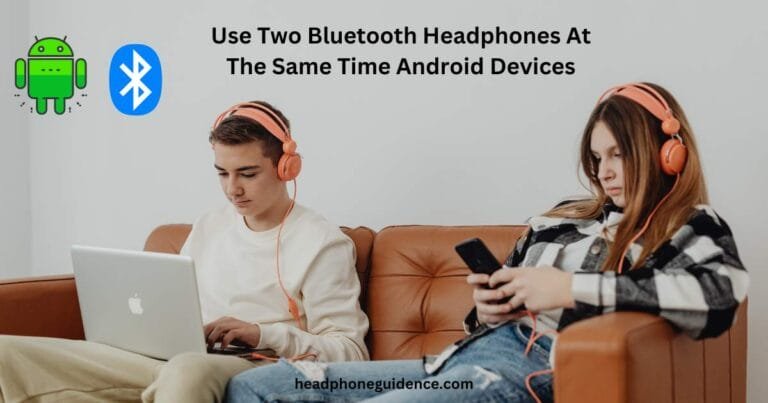Why do headphones give me a headache?
Experiencing Headaches While Using Headphones
Experiencing headaches while using headphones? You’re not alone. Many of us have found ourselves reaching for aspirin after a long jam session or podcast binge. But why do these seemingly innocent devices wreak havoc on our heads? Let’s delve into the world of headphone-induced headaches and uncover the root causes behind this all-too-common phenomenon.
Whether you’re plugged into your favorite tunes, engrossed in a gripping audiobook, or simply trying to drown out external distractions, headphones have become an essential part of our daily lives. However, they can also be a source of discomfort and pain if not used correctly.
In this blog post, we’ll explore the various factors that contribute to headphone-induced headaches and offer practical solutions to prevent or alleviate them. So grab your favorite pair of earbuds or over-ear cans (but maybe keep that bottle of painkillers handy) as we embark on this sonic adventure!

Understanding the Root Cause of Headphone-Related Headaches
Understanding the root cause of headphone-related headaches can help us find ways to prevent or reduce this discomfort. One possible reason for these headaches is the pressure that headphones exert on our ears and heads. When we wear headphones for an extended period, they can create a tight seal around our ears, leading to increased air pressure within the ear canal. This change in pressure can affect the Eustachian tube and potentially trigger a headache.
Another factor that contributes to headphone-induced headaches is volume levels. Listening to music or other audio content at high volumes puts additional strain on our auditory system, including the delicate structures in our inner ear. This strain can result in tension and even pain, which may manifest as a headache.
Additionally, certain types of headphones may exacerbate the risk of developing headaches. Over-ear headphones press against our temples and jaw muscles more than other styles, like in-ear or on-ear options. The constant compression of these areas over time can lead to muscle tension that triggers headaches.
Furthermore, poor posture during headphone use could also be a contributing factor. Slouching or leaning forward while wearing headphones places additional stress on the neck and upper back muscles, which might result in tension headaches.
It’s essential to recognize that individual susceptibility varies when it comes to experiencing headphone-related headaches. Some people may be more susceptible based on factors such as sensitivity to sound or preexisting conditions like migraines.
While understanding these potential causes helps shed light on why some individuals experience headaches with headphones, finding solutions is equally important, whether through adjusting volume levels, taking regular breaks from using headphones, maintaining good posture while wearing them, or choosing alternative styles better suited for your comfort.
By being aware of how different factors contribute to headphone-induced headaches and making informed choices about their use and style selection, headphone users can mitigate discomfort effectively without sacrificing their enjoyment of audio experiences!
Factors that Contribute to Headphone-Induced Headaches
1. High Volume
When it comes to headphones and headaches, there are several factors at play. One of the main culprits is volume. Many people tend to crank up the volume on their headphones, especially when trying to block out external noise. However, listening to loud music for extended periods can strain your ears and lead to headaches.


2. Not Fit on Head
Another factor is the fit of the headphones. If your headphones are too tight or don’t properly align with your ears, they can put pressure on certain areas and cause discomfort. This pressure can trigger tension headaches or even migraines in some individuals.
3. Over-Ear Headphones
The type of headphones you use also plays a role in headache development. Over-ear headphones may distribute weight more evenly across your head, reducing pressure points compared to on-ear or in-ear options.
4. Continue Usage of Headphones
Additionally, prolonged headphone usage without breaks can contribute to headaches as well. When we wear headphones for long stretches without taking them off, our ears become fatigued from constant stimulation. It’s important not only to take regular breaks but also to limit overall listening time.
5. Poor Audio Quality
Poor audio quality could be a contributing factor too! Low-quality audio may lack clarity and balance which forces us to turn up the volume resulting in potential discomforts including headaches!
By understanding these factors that contribute to headphone-induced headaches, you can take steps toward preventing them or reducing their frequency!
Potential Solutions to Prevent or Reduce Headaches When using Headphones
One of the most frustrating things about experiencing headaches while using headphones is that it can put a damper on your listening experience. But fear not! There are several potential solutions to help prevent or reduce those pesky headphone-induced headaches.
1. Regular Breaks from Wearing Headphones
First and foremost, it’s important to take regular breaks from wearing headphones. Extended periods with headphones on can put a strain on your ears and head, leading to discomfort and headaches. So make sure you give yourself some time without them, even if it’s just a few minutes every hour.
2. Keep the Volume at Comfortable Level
Another solution is to adjust the volume level of your headphones. Listening at excessively high volumes can be a major contributor to headaches. Keep the volume at a comfortable level where you can still enjoy the music or audio without causing unnecessary stress on your ears.
3. Use Noise-Canceling Headphone
Additionally, consider investing in noise-canceling headphones. These types of headphones use technology that reduces external sounds and background noise, allowing you to listen at lower volumes while still enjoying clear audio quality. Reducing external distractions, may also help alleviate any tension or strain that could lead to headaches.
4. Use Proper Fitting Headphone
Ensure that you are wearing properly fitting headphones. Ill-fitting or tight-fitting headphones can create pressure points around your head and ears, leading to discomfort and potentially triggering headaches. Look for adjustable headbands and cushioned ear cups that provide a snug yet comfortable fit.
Check Our Guide: Best Over Ear Headphones For Big Heads
5. Before Buy Analyse the Headphone
Remember, everyone is different when it comes to how their bodies react to certain stimuli like sound or pressure. It may take some trial and error before finding what works best for you in preventing headphone-related headaches. Don’t be afraid to experiment with different solutions until you find the one that fits perfectly (pun intended) for your needs!
Check Our Guide: Best 10 Noise-Canceling Headphones
Stay tuned for more helpful tips in our next blog section about choosing the right type of headphones for individuals prone to headaches.
Conclusion: Importance of choosing the right type of Headphones for individuals Prone to Headaches
Choosing the best type of headphones is crucial for individuals who are prone to headaches. With so many options available in the market, it can be overwhelming to find the perfect pair that suits your needs and doesn’t exacerbate your headaches.
One important factor to consider when selecting headphones is their design and fit. Over-ear headphones typically distribute pressure more evenly across the head, reducing strain on specific areas that could trigger a headache. On the other hand, in-ear headphones may put additional pressure on the ear canal, leading to discomfort and potential headaches.
Additionally, pay attention to the materials used in headphone construction. Some people may have sensitivities or allergies to certain materials such as plastic or leather. Opting for hypoallergenic materials or breathable fabrics can help minimize any adverse reactions that might contribute to headaches.
The weight of headphones also plays a role in preventing headaches. Heavy headphones can place excessive strain on your neck muscles and cause tension-related headaches over time. Look for lightweight options that won’t weigh you down during extended use.
Moreover, consider features like noise cancellation when choosing headphones as they can reduce external distractions and potentially alleviate stress-induced headaches caused by loud environments.
Don’t forget about adjusting volume levels while using headphones. Listening at excessively high volumes not only damages your hearing but also increases the risk of developing throbbing headaches due to increased stress on your auditory system.
By taking these factors into account when purchasing new headphones, you can significantly decrease the likelihood of experiencing headphone-induced headaches and enjoy a more comfortable audio experience overall.
FAQS
Why do my Over-the-Ear Headphones give me a Headache?
Are your over-the-ear headphones causing you more pain than pleasure? It’s a frustrating reality for many headphone users – that throbbing headache that just won’t go away. But fear not, because in this blog post, we’re diving into the reasons behind why your beloved headphones might be giving you a headache and what you can do to prevent it. So grab a seat (and maybe some aspirin), because we’re about to unravel the mystery of why headphones and headaches seem to go hand in hand!
Check Our Guide: Best Over Ear Headphones For Big Heads
How do I stop my Head from Hurting Headphones?
When it comes to stopping your head from hurting while wearing headphones, there are a few things you can try. First and foremost, make sure that you’re not cranking up the volume too high. Listening to loud music or sounds for an extended period can put a strain on your ears and ultimately lead to a headache.
Another factor to consider is the fit of your headphones. If they’re too tight or don’t sit comfortably on your head, this could potentially cause discomfort and headaches. Look for adjustable options that allow you to customize the fit according to your preference.
Additionally, taking regular breaks from wearing headphones can greatly help alleviate any potential headaches. Giving your ears and head some rest now and then will reduce fatigue and prevent excessive pressure buildup.
If noise-canceling headphones are causing you problems, it might be worth trying out different models or turning off the noise-canceling feature altogether. Some people find that the constant pressure created by active noise cancellation can contribute to headaches.
If Bluetooth headphones specifically seem to be triggering headaches for you, it could be due to electromagnetic radiation exposure. Consider using wired alternatives instead or opt for lower-emission Bluetooth devices.
Does it cause pain in your Head when using Earphones?
Does it cause pain in your head when using earphones? Many people have experienced discomfort or even headaches after prolonged use of headphones. While this may not be the case for everyone, there are several possible reasons why wearing earphones can lead to head pain.
One factor could be the pressure exerted by the headphones on your ears and head. If they are too tight or if you wear them for extended periods without taking breaks, this pressure can build up and result in discomfort. Another possible reason is the volume level at which you listen to music or other audio content. Listening at high volumes can strain your ears and potentially lead to headaches.
Additionally, some individuals may be sensitive to certain frequencies or sound signatures produced by their headphones. This sensitivity can trigger headaches or migraines when exposed to specific types of sounds.
To minimize the chance of experiencing head pain while using earphones, consider a few tips:
1) Adjust the fit of your headphones so they are comfortable but not overly tight.
2) Taking regular breaks from wearing them.
3) Keeping the volume at a moderate level that doesn’t strain your ears.
4) Choosing headphones with a frequency response that suits your preferences and avoids triggering any sensitivities.
How do you make my Headphones not give me a Headache?
If you’re experiencing headaches when using over-the-ear headphones, there are a few things you can try to make them more comfortable and reduce the likelihood of getting a headache.
Consider adjusting the fit of your headphones. Tight or loose headphones can cause discomfort and contribute to headaches. Make sure they are snug but not too tight on your head. You may also want to try different types of padding or cushions for added comfort.
Another factor to consider is the volume level. Listening at excessively high volumes can strain your ears and lead to headaches. Try lowering the volume and taking regular breaks from wearing your headphones.
Additionally, it’s essential to take breaks from wearing headphones altogether. Prolonged use can put pressure on certain areas of your head, leading to discomfort and headaches. Give yourself regular intervals without wearing headphones throughout the day.
Why do noise Cancelling headphones give me a headache?
Noise-cancelling headphones have become increasingly popular for their ability to block out external sounds and create a tranquil listening experience. However, some individuals may find that these headphones cause them to experience headaches. But why does this happen?
One reason could be the pressure exerted by the tight fit of over-the-ear noise cancelling headphones. These types of headphones often create a seal around your ears, which can lead to discomfort and even headaches after prolonged use. The constant pressure on your head can restrict blood flow and cause tension in the muscles, leading to pain.
Additionally, noise-cancelling technology itself may play a role in causing headaches. This technology works by analyzing ambient sound waves and producing inverse sound waves to cancel them out. While this is effective at blocking unwanted noises, it can also introduce slight variations in air pressure within the ear cup, potentially triggering headaches for sensitive individuals.
Moreover, wearing noise cancelling headphones for an extended period can contribute to headphone fatigue syndrome (HFS). HFS occurs when there is excessive strain on the muscles surrounding the head and neck due to long-term headphone use. Headaches are one of the common symptoms associated with HFS.
To prevent or minimize these issues, consider taking regular breaks from wearing your noise-cancelling headphones, adjusting them for a looser fit if possible, or opting for alternative headphone styles that don’t apply as much pressure on your head.
It’s important to note that everyone’s sensitivity levels vary; what might trigger headaches in one person may not affect another at all. If you consistently experience severe discomfort or recurring migraines when using noise-canceling headphones despite making adjustments or trying different brands/models, it would be wise to consult with a healthcare professional who can provide personalized advice based on your specific situation.
Check Our Guide: Best 10 Noise-Canceling Headphones
Finally
While noise-cancelling headphones offer many benefits such as improved focus and immersive audio experiences, they may not be suitable for everyone due to the potential for headaches. Understanding the underlying causes and taking proactive measures can help
Why do Bluetooth headphones hurt my head?
Headphones can sometimes cause headaches for various reasons. While over-the-ear headphones may put pressure on the head and ears, leading to discomfort and pain, there are ways to alleviate this issue.
By ensuring a proper fit and adjustment of your headphones, taking regular breaks from wearing them, and using noise-canceling features in moderation, you can minimize the likelihood of experiencing headaches. Additionally, choosing Bluetooth headphones with adequate padding and adjustable settings can help reduce discomfort.







